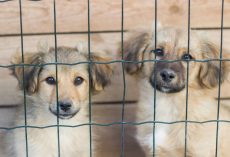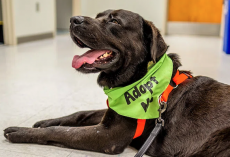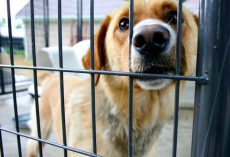Is your dog growling, snapping or showing other signs of aggression?
It can be scary — but aggression is almost always a communication issue, not a “bad dog” problem. Your pup is telling you he’s uncomfortable, and learning to recognize those signals is the key to keeping everyone safe.
Aggression rarely comes out of nowhere. Most dogs give plenty of warning before they escalate — and it’s our job to notice those signs and defuse the situation early.
Step 1: Figure Out Why Your Dog Is Acting Aggressively
Before you can help your dog, you need to understand the trigger behind the behavior.
First you want to evaluate why. ‘Aggression in dogs’ is a blanket statement — we need to break it down and get to the root of the problem.
Ask yourself:
- Does the behavior happen when someone touches or cleans his paws?
- When another dog gets too close?
- When a stranger or delivery person approaches the house?
There’s no one-size-fits-all fix. The cause determines the solution.
Types of Aggression in Dogs
Understanding what kind of aggression your dog is showing helps you address it safely and effectively. Here are the most common categories:
Territorial Aggression
Protecting a space — home, yard, crate — from unfamiliar people or animals.
Fear Aggression
Reacting when scared, especially if cornered or unable to escape.
Possessive (Resource Guarding) Aggression
Guarding items or people he values — toys, food, or even a favorite human.
Protective Aggression
Defending human or animal family members from perceived threats.
Sex-Related Aggression
Dogs of the same sex competing for mates. Spaying/neutering often prevents this.
Social Aggression
Poor or limited socialization leading to overreaction in social situations.
Defensive Aggression
A “back off” response when the dog’s signals to stop aren’t respected.
Redirected Aggression
A dog can’t reach the real trigger (like another barking dog), so he lashes out at whoever’s nearby.
Predatory Aggression
Triggered by movement or prey-like behavior (e.g., chasing squirrels).
Signs Your Dog Is About to Become Aggressive
Dogs almost always tell you when they’re uncomfortable — if you know what to look for. Context matters, but common warning signs include:
- Yawning
- Lip licking
- Showing teeth
- Growling or snapping
- Raised hackles
- Avoiding eye contact
- Rigid or tense body
- Turning the head away
- Walking away
Recognizing these early signals lets you step in, redirect, or remove your dog before things escalate.
How to Stop (and Prevent) Aggressive Behavior
Aggression is serious, and you shouldn’t tackle it alone. A certified positive reinforcement trainer or veterinary behaviorist can help you safely identify the cause and create a plan.
A typical plan includes:
⭐ 1. Identifying triggers
Together, you’ll figure out what sparks the behavior — fear, resource guarding, lack of socialization, etc.
⭐ 2. Positive reinforcement training
This often includes:
- Desensitization — exposing your dog to triggers at a low intensity
- Counterconditioning — changing how your dog feels about the trigger
- Redirection — teaching calm, alternative behaviors
⭐ 3. Avoiding punishment
Punishing growling or snapping doesn’t solve the problem — it suppresses the warning signs and can make your dog more dangerous in the long run.
⭐ 4. Learning canine body language
Knowing when your dog is stressed allows you to prevent triggers before they turn into reactions.
When you get a dog, learn about dog body language, proper socialization, and consider hiring a certified positive reinforcement dog trainer.
The Bottom Line
Aggression is a symptom, not a personality flaw. With professional support, patience, and positive training, most dogs can make huge improvements. Understanding your dog’s signals — and helping him feel safe — is the most important step toward preventing aggression for good.











